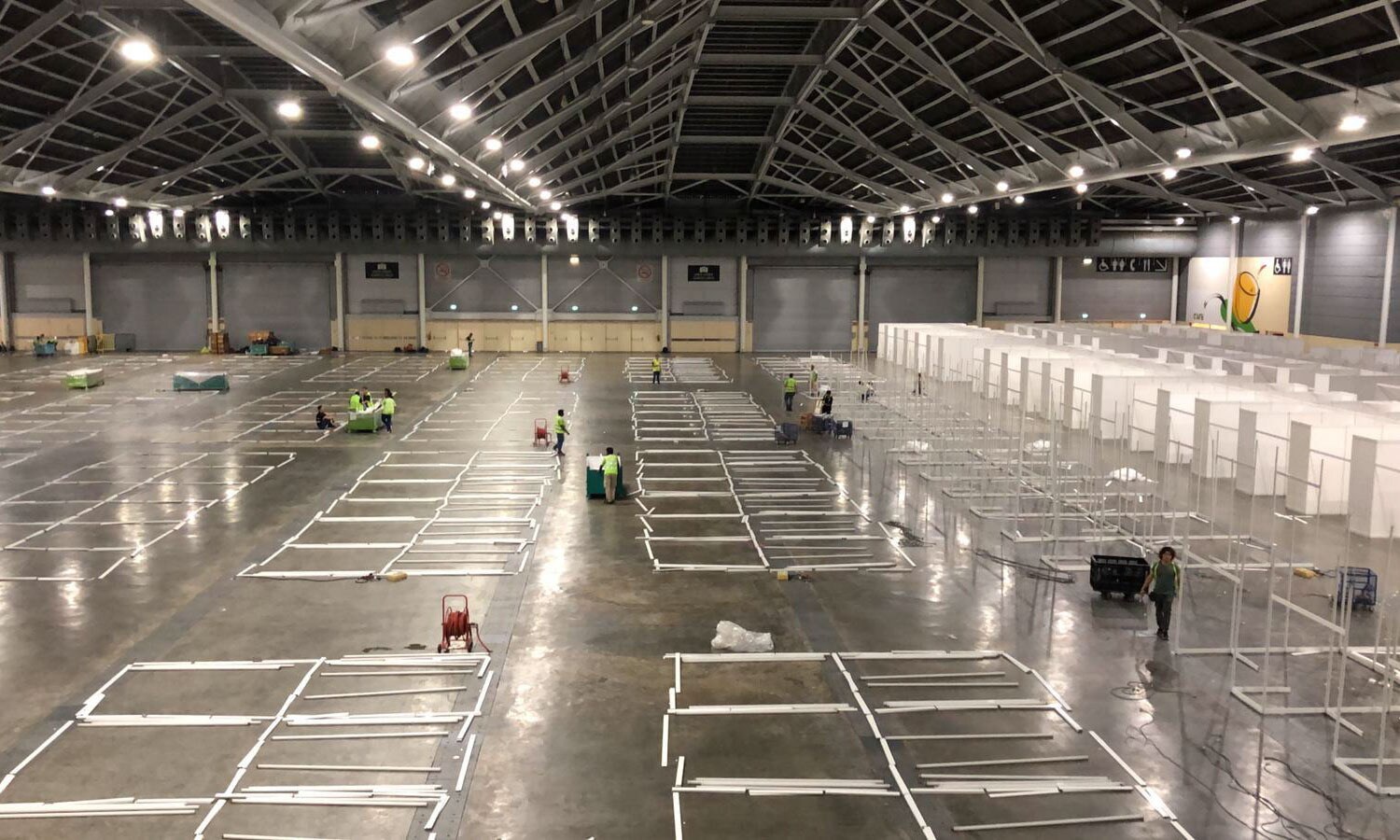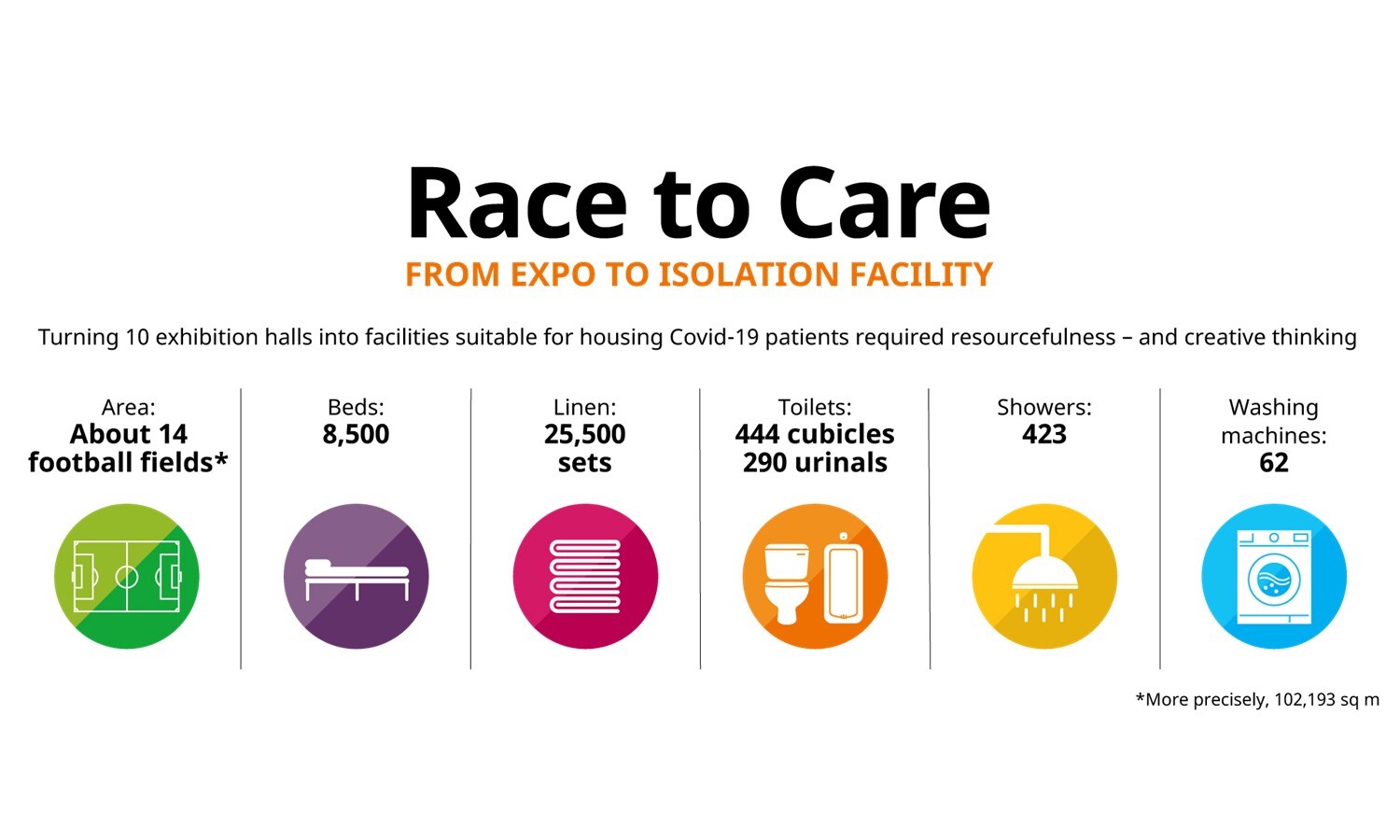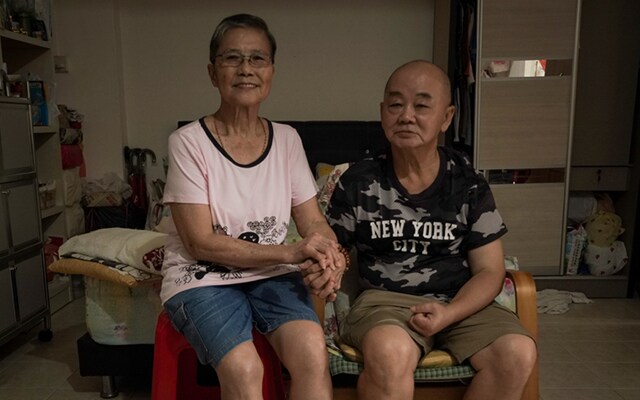28 Days, 10 Halls, One Goal
28 Days, 10 Halls, One Goal
Singapore Expo’s massive halls were converted into a COVID-19 Community Care Facility, which freed up capacity at local hospitals.
(Video: Surbana Jurong)
It was the final 48 hours to launch, and the project team had been running on only a few hours of sleep.
The mission for this cast of hundreds was to transform Singapore Expo’s Hall 4 into a medical-grade facility — and to do so within a week. The retrofitted exhibition hall would be the first of the Expo’s ten halls to serve as a COVID-19 Community Care Facility (CCF), housing infected individuals who did not need to be in hospital, but still needed isolation and care.
Nothing of this nature had been attempted before – and definitely not at this scale, says Surbana Jurong development manager Vincent Lee, who oversaw the project. Surbana Jurong, an urban infrastructure consultancy, helped with identifying suitable venues, and converting them into CCFs.
“The development team was not medically trained, and the medical workers were more accustomed to purpose-built facilities. We all had to break away from our usual practices and be flexible, adaptable, and sometimes, use our imagination,” Lee adds.

Workers marking out cubicles in one of Singapore Expo’s halls.
(Photo: Surbana Jurong)
By 6pm on April 10, the 480 cubicles in Hall 4 were up and running. Three hours and a small scramble later, the first nine patients moved in.
Mixed in with exhaustion was a well-deserved sense of achievement. It had taken an uncommon partnership of engineers, architects, medical advisors, project managers, procurement staff and workers on the ground to figure the project out.
But it was only one hall down, with nine more to go. And the clock was ticking.
We are committed to fight against COVID-19. Learn how we are doing this across five key fronts.
Creating a facility with almost as many hospital beds as all of Singapore’s hospitals combined was a unique and massive challenge — and one that required the full strength of not just an ecosystem, but the right ecosystem.
Temasek was able to do so by drawing on a variety of skills and perspectives from its portfolio companies, which span a range of industries, from infrastructure development to healthcare, explains Temasek’s Director of Enterprise Development, Khoo Ee Ping.
The team came from portfolio companies Surbana Jurong, PSA Singapore, Certis Cisco and SingEx, as well as other industry partners including Woodlands Health Campus, Parkway Pantai and Resorts World Sentosa.
These are extraordinary times, and they call for extraordinary measures…these companies stepped forward, and they made it happen.
Khoo Ee Ping
Director, Enterprise Development
Temasek
Yet, even with their collective strengths, it was a project fraught with challenges, one of the largest being the air that everyone would breathe. Air supply for the areas housing the sick — the red zone — and for the holding areas for staff — the green zone — needed to be kept separate.
“We had to remove all traces of the virus from the air coming out of the red zone, using filters, before it was discharged. We also had to pressurise the green zone so there was no exchange of air between the two,” explains Lee.
It would take 51 exhaust systems — including four ducts for each hall — and specialised filters that had to be imported, installed, and then tested again and again, to get the job done.
Beyond safety, there was also a long list of liveability and sanitation requirements, from ensuring sufficient beds and linen to setting up hundreds of toilets, shower facilities, and even washers and dryers.

It often called for resourcefulness — and creative thinking. By the time the team got to Halls 7 to 10, the country’s biggest exhibition contractors had run out of the exhibition panels that served as cubicle dividers. The Circuit Breaker meant more could not be made, nor could they be sourced from across the Causeway. In the end, they simply had to be built from drywall.
Despite the challenges, all ten halls and 8,500 beds were up and running in just 28 days, freeing up hospital capacity at a time when case numbers among Singapore’s migrant worker community were climbing. By early June, the facility was almost full, with close to 7,300 beds occupied.
Today, occupancy rates have fallen alongside the rate of infection and as more residents recover and head home. The facility however remains ready to receive new residents should Singapore be hit by another wave of infections.
Says Temasek’s Khoo: “Everyone just pitched in. Their businesses took a backseat as they focused on getting this up and running. And it’s not over. We are all continuing to do what we can. We’re proud to be a small part of this bigger effort.”
Temasek is an investor in Surbana Jurong, PSA Singapore, Certis Cisco and SingEx Holdings.

